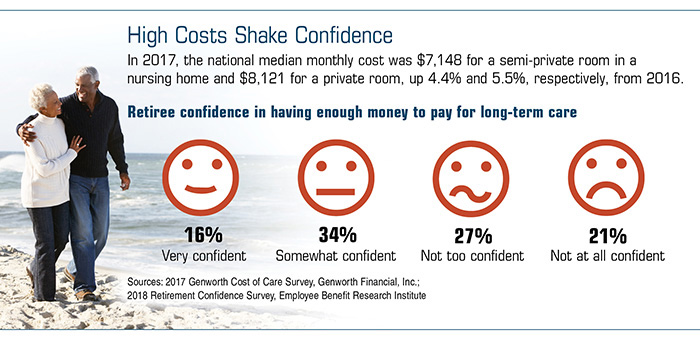What Does Pacific Prime Mean?
Table of ContentsThe 9-Minute Rule for Pacific PrimeSome Ideas on Pacific Prime You Need To KnowThe 45-Second Trick For Pacific PrimeFascination About Pacific PrimeThe Buzz on Pacific Prime

This is because the information were accumulated for a period of solid economic efficiency. Of the approximated 42 million individuals that were uninsured, almost concerning 420,000 (about 1 percent) were under 65 years old, the age at which most Americans come to be eligible for Medicare; 32 million were adults between ages 18 and 65, about 19 percent of all grownups in this age; and 10 million were kids under 18 years of age, concerning 13.9 percent of all youngsters (Mills, 2000).
These estimates of the number of individuals without insurance are generated from the annual March Supplement to the Present Populace Study (CPS), conducted by the Census Bureau. Unless otherwise kept in mind, nationwide quotes of people without medical insurance and proportions of the population with various sort of protection are based on the CPS, the most commonly made use of source of quotes of insurance coverage and uninsurance prices.
Little Known Facts About Pacific Prime.

Still, the CPS is specifically helpful since it produces annual price quotes fairly swiftly, reporting the previous year's insurance protection approximates each September, and since it is the basis for a consistent set of quotes for more than two decades, enabling analysis of patterns in protection over time. For these factors, in addition to the comprehensive usage of the CPS in various other researches of insurance policy protection that exist in this report, we rely on CPS price quotes, with restrictions noted.

The estimate of the variety of uninsured individuals broadens when a populace's insurance coverage status is tracked for a number of years. Over a three-year period starting early in 1993, 72 million people, 29 percent of the U.S. https://disqus.com/by/disqus_tLNq8V4sBK/about/. population, were without coverage for at the very least one month. Within a single year Get More Information (1994 ), 53 million individuals experienced a minimum of a month without protection (Bennefield, 1998a)
Six out of every 10 uninsured grownups are themselves utilized. Although working does improve the chance that a person and one's household participants will have insurance policy, it is not an assurance. Also members of family members with two permanent breadwinner have almost a one-in-ten opportunity of being uninsured (9.1 percent uninsured rate) (Hoffman and Pohl, 2000).
The Main Principles Of Pacific Prime
New immigrants account for a considerable percentage of individuals without medical insurance. One evaluation has actually attributed a significant portion of the current growth in the size of the united state without insurance population to immigrants who arrived in the country between 1994 and 1998 (Camarota and Edwards, 2000). Current immigrants (those that concerned the USA within the previous 4 years) do have a high price of being without insurance (46 percent), yet they and their children account for simply 6 percent of those without insurance coverage across the country (Holahan et al., 2001).
The relationship between medical insurance and accessibility to care is well developed, as documented later in this chapter. Although the relationship between medical insurance and health and wellness results is neither straight nor basic, an extensive medical and wellness solutions research study literature links medical insurance protection to better accessibility to care, far better top quality, and boosted individual and population health and wellness condition.
Degrees of evaluation for taking a look at the effects of uninsurance. This conversation of health and wellness insurance policy coverage concentrates mainly on the united state population under age 65 due to the fact that virtually all Americans 65 and older have Medicare or various other public protection. In addition, it focuses especially on those with no health and wellness insurance for any kind of length of time.
7 Simple Techniques For Pacific Prime
The issues dealt with by the underinsured are in some respects similar to those dealt with by the uninsured, although they are typically less serious. group insurance plans. Uninsurance and underinsurance, however, entail clearly different policy issues, and the strategies for resolving them might vary. Throughout this research and the five reports to follow, the major emphasis gets on persons with no health insurance and hence no aid in spending for healthcare past what is available through charity and safety internet organizations
Medical insurance is a powerful variable impacting receipt of treatment since both clients and physicians react to the out-of-pocket cost of services - https://pacificpr1me.weebly.com/. Medical insurance, nevertheless, is neither required nor sufficient to access to clinical solutions. Nevertheless, the independent and direct effect of health insurance policy protection on access to health services is well established.
Others will certainly obtain the healthcare they require even without health insurance policy, by spending for it out of pocket or seeking it from carriers who supply care free or at highly subsidized prices. For still others, health insurance policy alone does not ensure invoice of treatment as a result of various other nonfinancial obstacles, such as a lack of wellness care carriers in their community, restricted accessibility to transportation, illiteracy, or linguistic and cultural distinctions.
Top Guidelines Of Pacific Prime
Formal research study regarding without insurance populaces in the USA dates to the late 1920s and early 1930s when the Committee on the Cost of Medical Care created a series of records concerning funding physician office check outs and hospital stays. This issue became salient as the numbers of medically indigent climbed up throughout the Great Depression.